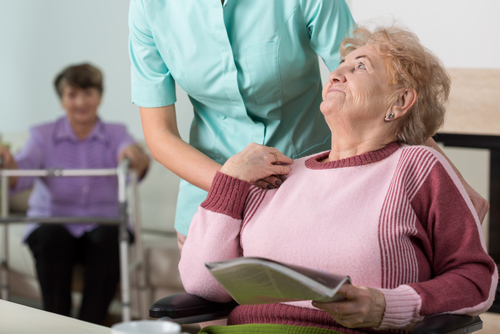Updated November 10, 2017
In 2016, it was reported that lawsuits against assisted living facilities were on the rise, far surpassing the number of nursing home negligence cases. Neville Bilimoria, a partner with Chicago’s health practice law group Duane Morris LLP, said, “The plaintiffs’ [attorneys] use one theme in all of their nursing home negligence cases, and that translates to the theme that they use for assisted living: The home puts profits over people. And they hammer that message home because it resonates with juries.”
An assisted living facility has a number of exposures that need to be addressed with comprehensive insurance and risk management program, as well as policies and procedures. These are the risks at assisted living facilities that most frequently result in lawsuits:
- Slips and falls
- Abuse (sexual and physical)
- Fleeing or wandering away
- Failure to supervise
- Wrongful death
- Improper administration of medication
- Wound issues
- Transportation accidents
For each of the above-mentioned risks, there should be clear procedures in place to prevent them, with employee training provided upon hire and periodically throughout the year. As Bilimoria stated, the common thread in many of these risk factors is neglecting to take residents’ needs and likely behavioral patterns into account, and failing to create policies and procedures to address them and prevent potential tragedies. The most important thing for an assisted living facility to do is plan ahead, and learn from incidents and near-misses to adjust their strategy to prevent future incidents.
These are some ways in which assisted living facilities can plan ahead to address some of their most prominent risks:
- Slips and falls are most commonly caused by poorly-maintained flooring surfaces. Whether a facility uses carpeting or hard flooring, the flooring should be in good condition and not be in need of significant upgrades. Carpets should be low pile, and loose rugs should rarely (if ever) be used. Hard flooring should never be left wet, as it could cause a resident to slip. Lighting should also be kept in good condition, as poor lighting can prevent residents from seeing obstacles. All walkways should also be kept clear, and handrails should be present wherever possible (bathrooms in particular).
- Unfortunately, resident abuse does occur to an alarming degree. All staff members should thoroughly be screened prior to hiring, and whenever possible facilities should have multiple staff members working together.
- To address potential elopement, facilities should identify residents at risk of fleeing or wandering away through a comprehensive screening process that would take place upon admission and periodically throughout their residence, with elopement education and drills. Facilities should also take security measures to prevent residents from leaving the premises unexpectedly, such as video surveillance, security guards, and secured exits.
- All facilities should be thoroughly staffed in order to ensure that there will be sufficient numbers of employees on hand to handle any situation, whether it is a natural disaster, a fall, or a disease outbreak. Though the Assisted Living Federation of America does not have a standardized staff-to-resident ratio, all facilities should check with their state laws.
- Wrongful death is a broad term, and it is one that can fall at the feet of a facility even in a catastrophic situation (such as a hurricane) if it is proven that the facility did not take adequate action to prepare for an unexpected disaster. All facilities should be regularly inspected to ensure that they are structurally sound and can withstand potential strong weather, an adequate emergency food supply should be kept on hand, there should be backup generators ready to step in in the event of a power outage, and employees should know who to contact in the event of an emergency (and who should contact them).
- Procedural mistakes can also potentially lead to suits, with one of these being “rubber stamping” physician orders without proper consideration. The facility should thoroughly document all conversations that take place between staff and physicians, residents, and family members, and have a highly organized system for administering medication.
- Transportation should never occur without the knowledge of the facility, and should only be performed by a staff member specifically trained for that purpose, especially if the resident being transported is fragile or needs to be transported with special equipment (such as breathing tubes). Communication should occur between the driver, the facility, and the destination, and transportation should be rescheduled if poor weather makes it too risky.
About Caitlin Morgan
Managing the numerous risks assisted living facilities is critical to the success of a facility, its census numbers, reputation in the community, and in reducing potential accidents and injuries. At Caitlin Morgan, we specialize in providing broad and competitive insurance programs for assisted living facilities in addition to offering risk management solutions to help stem losses. We can assist you in putting in place the right program for your clients. Give us a call at 317.575.4440.


